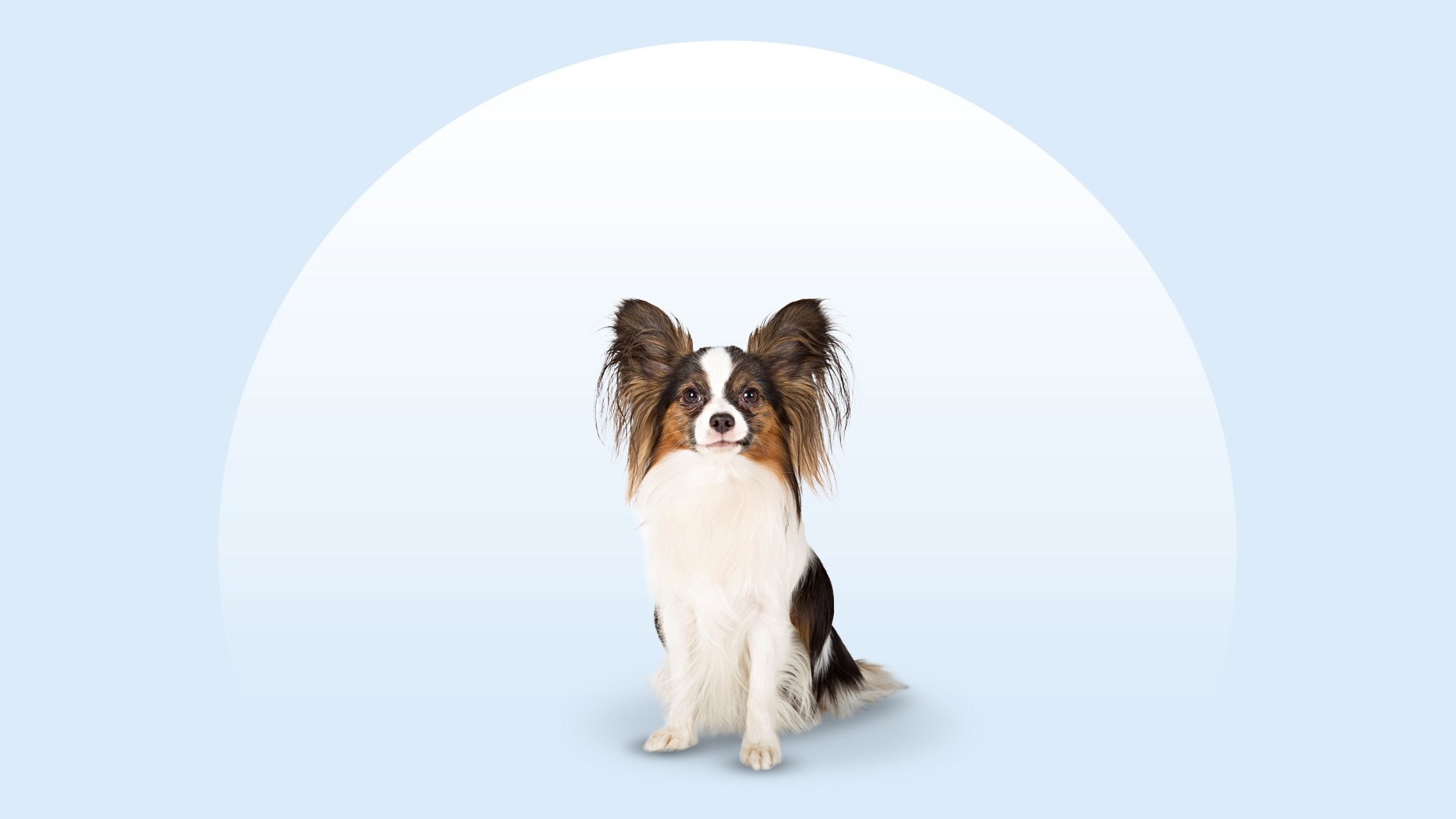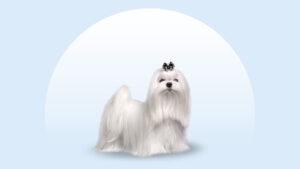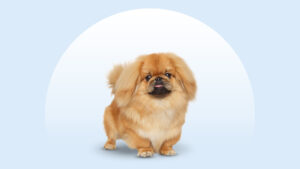Papillon
Updated December 15, 2025
Papillon
Updated December 15, 2025
Intelligent and full of energy, Papillons thrive with active pup parents who can provide exercise, mental stimulation, companionship, and regular grooming (just look at that long, silky coat!). Because they’re so small and adaptable, Papillons are well-suited for homes large and small.
Cheery, Smart, Social
5–10 pounds
8–11 inches
14–16 years
White and Black, White and Lemon, White and Red, White and Sable, White Black and Tan
Papillons were born to be the life of the party—and bonus points if the party’s outside. This outgoing breed has lots of energy to burn, so get your kicks ready because you’ll be spending your days going for walks around the neighborhood.
These bubbly dogs, known for their adorable ears that resemble butterfly wings, are cheery and extroverted, and they’re delighted you’ve chosen them to be your friend. In return, your Papillon dog will expect a doting pet parent who shares their love of socializing.
After all, this little “butterfly” is truly the life of the party, and they’ll make every day brighter.
Papillon Characteristics
Papillon Appearance
The Papillon has large, silky ears that resemble butterfly wings. It’s where they get their name; papillon means “butterfly” in French.
A Papillon dog’s mostly white, fluffy coat is long on the back, chest, and top of the legs. Their plume-like tail matches their happy little trot.

- Ears
Papillon ears are their standout feature. Set high on the head, they stick out prominently on each side and are fringed with long hair. Essentially, they look and move like butterfly wings. There is a second type of Papillon, called the Phalène, who has ears that drop down and fold forward. This pup’s name is derived from the French word for moth.
- Eyes
Small and round, a Papillon’s eyes are alert and eager.
- Nose
The nose is a small, black oval perched at the end of a delicate muzzle that tapers slightly from head to tip.
- Coat Length
The single coat is usually long, silky, and full. Typically, the hair grows shorter on the dog’s head and face, while hanging long and straight on the rest of the body. From behind, the fluffy hair covering the hind legs looks like a pair of culottes, and a similar patch of fluff covers the chest.
- Coat Color
The Papillon coat is mostly white with patches of color. Standard color combos include white and black; white and lemon; white and red; white and sable; and white, black, and tan.
- Tail
A Papillon tail has long, silky, flowy hair.
Papillon Temperament
We would all be lucky to be more like the Papillon: bursting with energy and always ready for a new adventure.
Confident and outgoing, Papillon dogs usually get along well with everyone, no matter if you have two legs or four. But it’s still important that they get plenty of socialization, because (just like a little kid who is super attached to their mom or dad) Papillon puppies can become a little too dependent on their pet parents if not encouraged to go outside their comfort zone.
Once that confidence kicks in, watch out, world: Papillons don’t know their small size, and it’s a joy to watch their spunky, fearless attitude come out.
Papillon dogs are usually the life of the party, and they tend to do well with other small dogs, cats, and older kids. Because they’re small and fragile (though they’ll never admit it), they’re not always the best fit for big dogs who might accidentally overpower them or rambunctious kids who might not know their own strength. Puppy playtime should always be supervised.
How to Care for a Papillon
Surprise! Papillons may look high maintenance, but their needs are a little more moderate than you might expect. Specifically, they’re a breeze to train and light on grooming needs.
Grooming
Training
Diet
Exercise
Environment
Papillon Health
The average Papillon lifespan is 14–16 years. Here are some health issues to be aware of.
- Dental disease: Small breed dogs are more at risk of dental disease. Prevent it before it starts by brushing daily and getting a professional dental cleaning at your vet’s recommendation.
- Hypoglycemia: Low blood sugar is common in Papillon puppies. Feed your dog on a regular schedule to prevent hypoglycemia; most pups eventually outgrow it. A high-calorie supplement, like Nutri-Cal, can help with an episode.
- Luxating patella: Papillons can develop a luxating patella, where the kneecap slips out of place. A bunny hop, skip, or limp could be a symptom. It may be treated with joint supplements and medication, if mild, though surgery may be necessary.
- Open fontanelle: Papillons, like all dogs, are born with a soft spot at the top of their skull. It usually closes (much like in a newborn human baby) within 12 weeks of age. Sometimes, however, it fails to close in Papillons and other small breeds, and this can mean pups need to be especially careful of any head trauma.
- Progressive retinal atrophy (PRA): PRA leads to blindness in dogs, and while there is no cure, pups who lose their eyesight tend to adapt well and can still live full, happy lives.
Papillon History
During the Renaissance, it wasn’t unusual for nobility to breed smaller versions of popular dogs. Spaniels were bred with toy breeds to produce these “dwarf spaniels,” which quickly became favorite lap buddies of royals throughout Europe.
In the 17th century, a breeder in King Louis XIV’s French court bred a pup with very perky ears and gave them the name “Papillon.” These little dogs with the butterfly ears quickly became all the rage in France, where they were favorites of Madame de Pompadour and Marie Antoinette. Walk into an art museum today, and you’re likely to see these dogs in paintings by Rembrandt and Goya.
While not all varieties of this breed have such alert ears, they nevertheless grew so popular that the entire breed eventually became known by the name Papillon. They were recognized by the American Kennel Club in 1915.
Papillon puppies tend to cost as much as $2,000. If you choose this route, pick a responsible breeder.
You can also adopt a Papillon, as there are many patiently waiting for their forever families. Look for a local Papillon rescue, like Papillon Pals Rescue; keep an eye out at your local shelter, or search Chewy’s database of adoptable dogs in your area.








